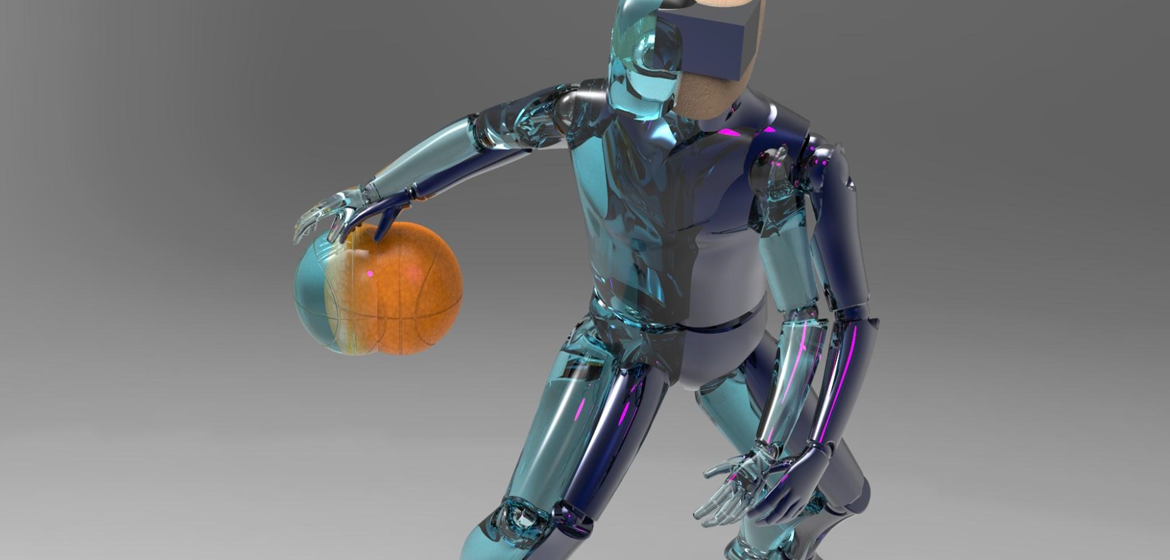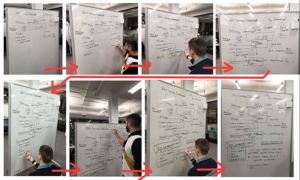Augmented Physical Learning
Augmented Physical Learning
A business design project proposal intended to strategically partner Myant’s textile computing technology with AR for training, rehab, athlete markets
As part of OCAD’s industrial design professional preparation class, I developed a business design project proposal in a team of six, focusing on research and concept development as my leading contribution in this group’s particular dynamic. The concept was to strategically unite Myant’s textile computing technology with augmented reality partnerships in order to design a versatile product that would specialize in physically training or encouraging specialized movements in users who need remote rehabilitation or physical skill development.
Problem Definition
How might we help people rehabilitating from injuries spend less time interrupted from life?
How might we help athletes improve their skills faster, on demand, and in context?
How might we provide greater access to advanced physical training for lower costs?
Methods
Competitive market analysis
Trend analysis & synthesis
Business model development
Identifying value proposition
Design project proposal writing
Key Insights
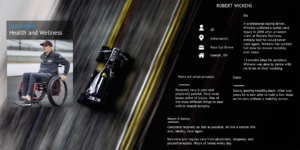
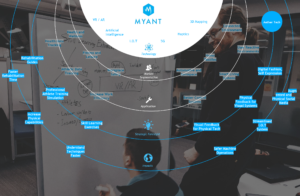 Rehabilitation from injury can be hastened through artificial stimulation of muscles in the appropriate locations.
Rehabilitation from injury can be hastened through artificial stimulation of muscles in the appropriate locations.
AR / VR experiences are becoming increasingly effective and in demand for skills training.
There is a rapidly growing market for athletic training provided by role model athletes, AR / VR technology can account for lack of supply, prohibitive costs.
Significant research and development efforts are being dedicated to complementing AR / VR with haptic feedback to improve the user experience by making it feel real.
Myant’s product offering of “textile computing” and identified sectors of interest make expanding into AR /VR software partnerships a sensible business decision.
Solution Development
Our process for developing the concept and business model, and writing the project proposal, was a collaborative effort by the group in discussions with the aid of a whiteboard, and in individual research, completion of the business model canvas and value proposition templates, and visual design to report our findings.
Results
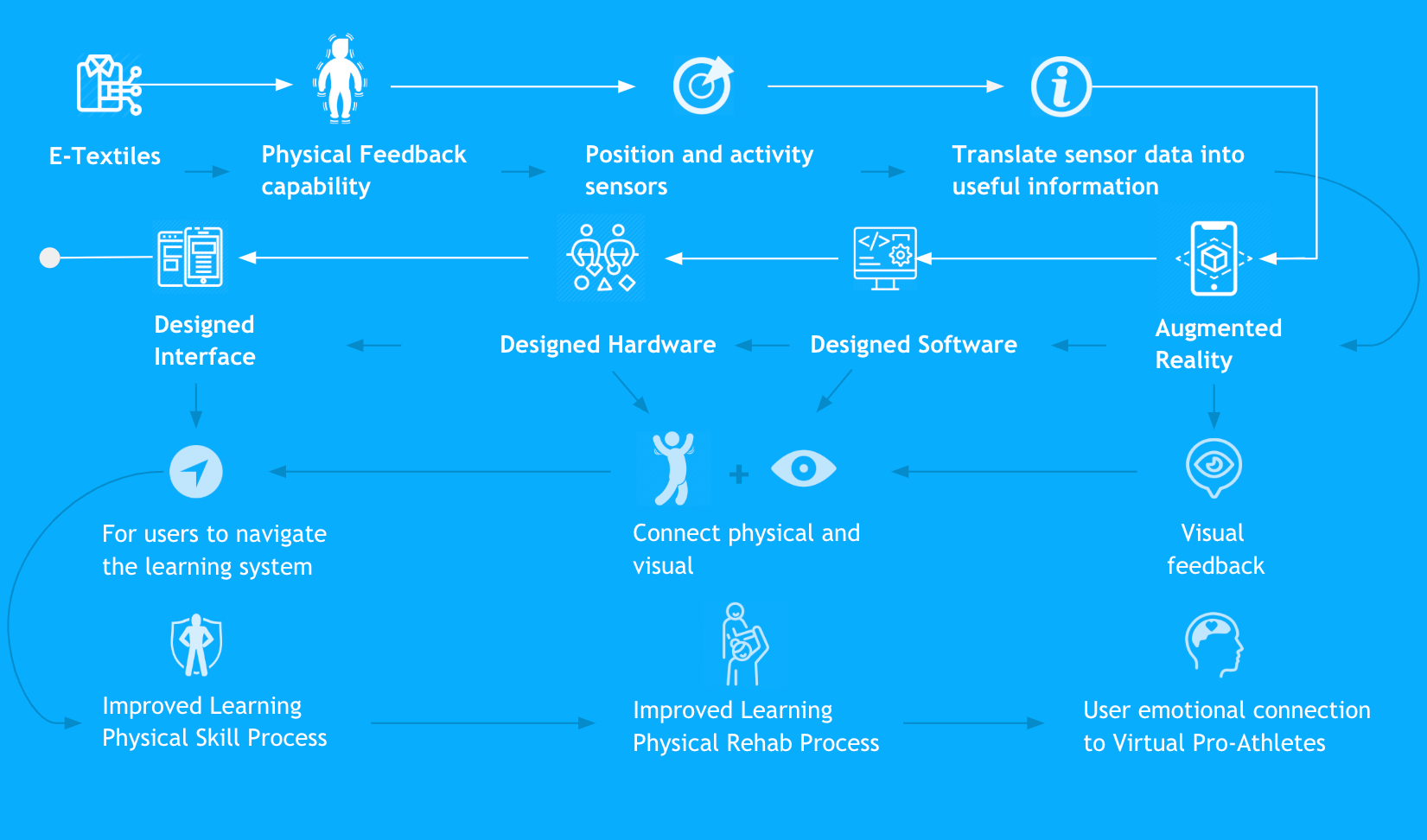 The business design project proposal we produced was extremely successful, and the project’s original scope was to include further development in marketing strategy and a business plan before being completed and pitching the project to Myant. However, we were forced to conclude the project at the proposal stage due to the COVID-19 pandemic cancelling in-person activities at the school. I am hoping to be able to make future progress on this concept, as it is very well researched and shows much potential for success.
The business design project proposal we produced was extremely successful, and the project’s original scope was to include further development in marketing strategy and a business plan before being completed and pitching the project to Myant. However, we were forced to conclude the project at the proposal stage due to the COVID-19 pandemic cancelling in-person activities at the school. I am hoping to be able to make future progress on this concept, as it is very well researched and shows much potential for success.
Design Process
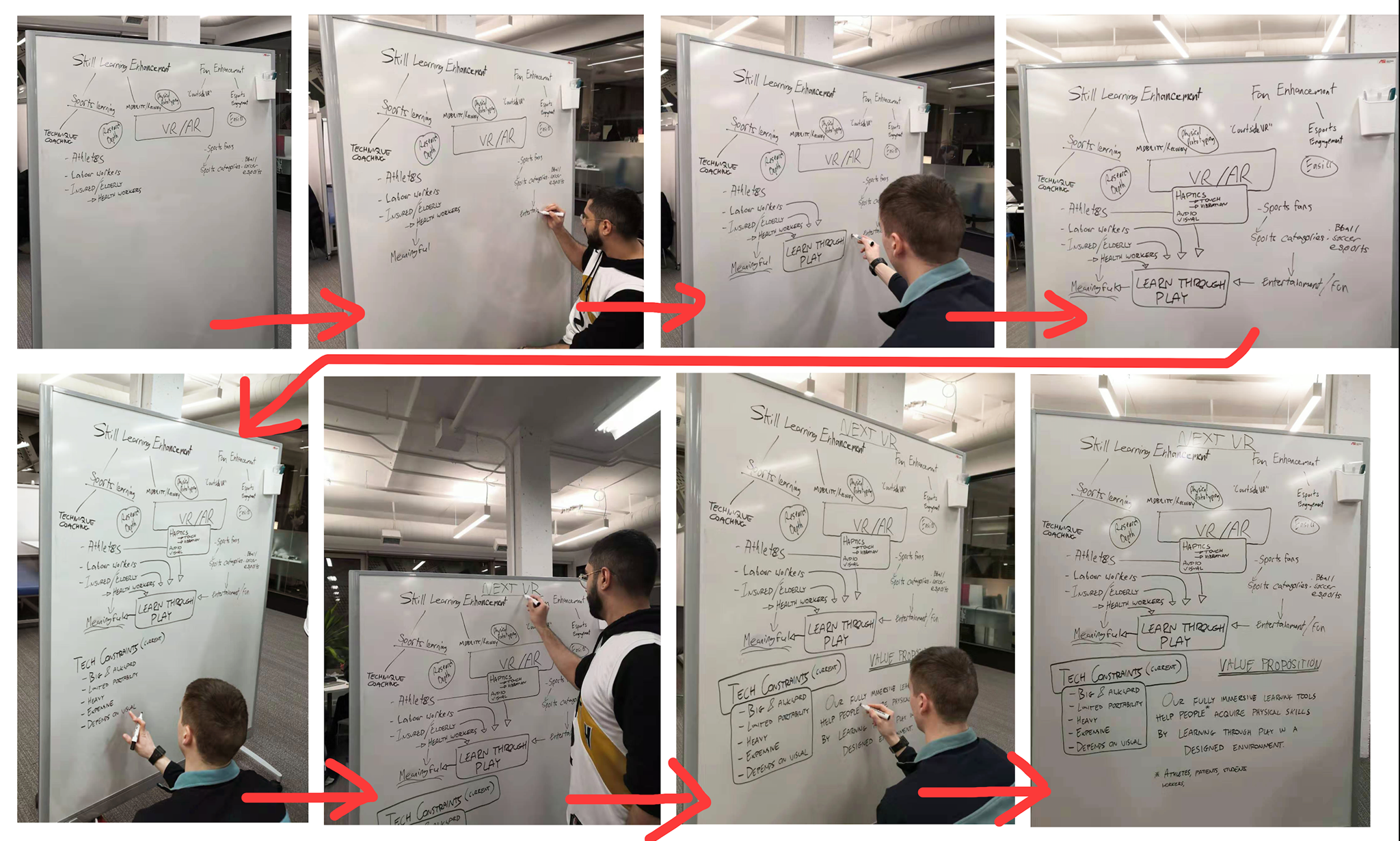 Our process required the team to bring many different areas of expertise to the table, particularly strategic foresight and business development knowledge. We founded a team with very well-rounded skills; I took on a role of content development, which was instrumental as the end goal of the time we were allotted was to put together a compelling project proposal intended as a pitch to the client we had in mind. I also contributed to establishing a value proposition and business model, both of which I am familiar with thanks to many previous Global Service Design Jam events, and to developing our concept, which we accomplished in a group brainstorming session on a whiteboard.
Our process required the team to bring many different areas of expertise to the table, particularly strategic foresight and business development knowledge. We founded a team with very well-rounded skills; I took on a role of content development, which was instrumental as the end goal of the time we were allotted was to put together a compelling project proposal intended as a pitch to the client we had in mind. I also contributed to establishing a value proposition and business model, both of which I am familiar with thanks to many previous Global Service Design Jam events, and to developing our concept, which we accomplished in a group brainstorming session on a whiteboard.

![]() Team Formation and Defining Roles
Team Formation and Defining Roles
After assembling our team of six, we quickly found that we had a diverse set of skills: business development, strategic foresight, research, graphic design, and prototyping were all represented among us. As a result, it was sensible to take on roles that most suited each of us, which placed me firmly into research and content writing duties.
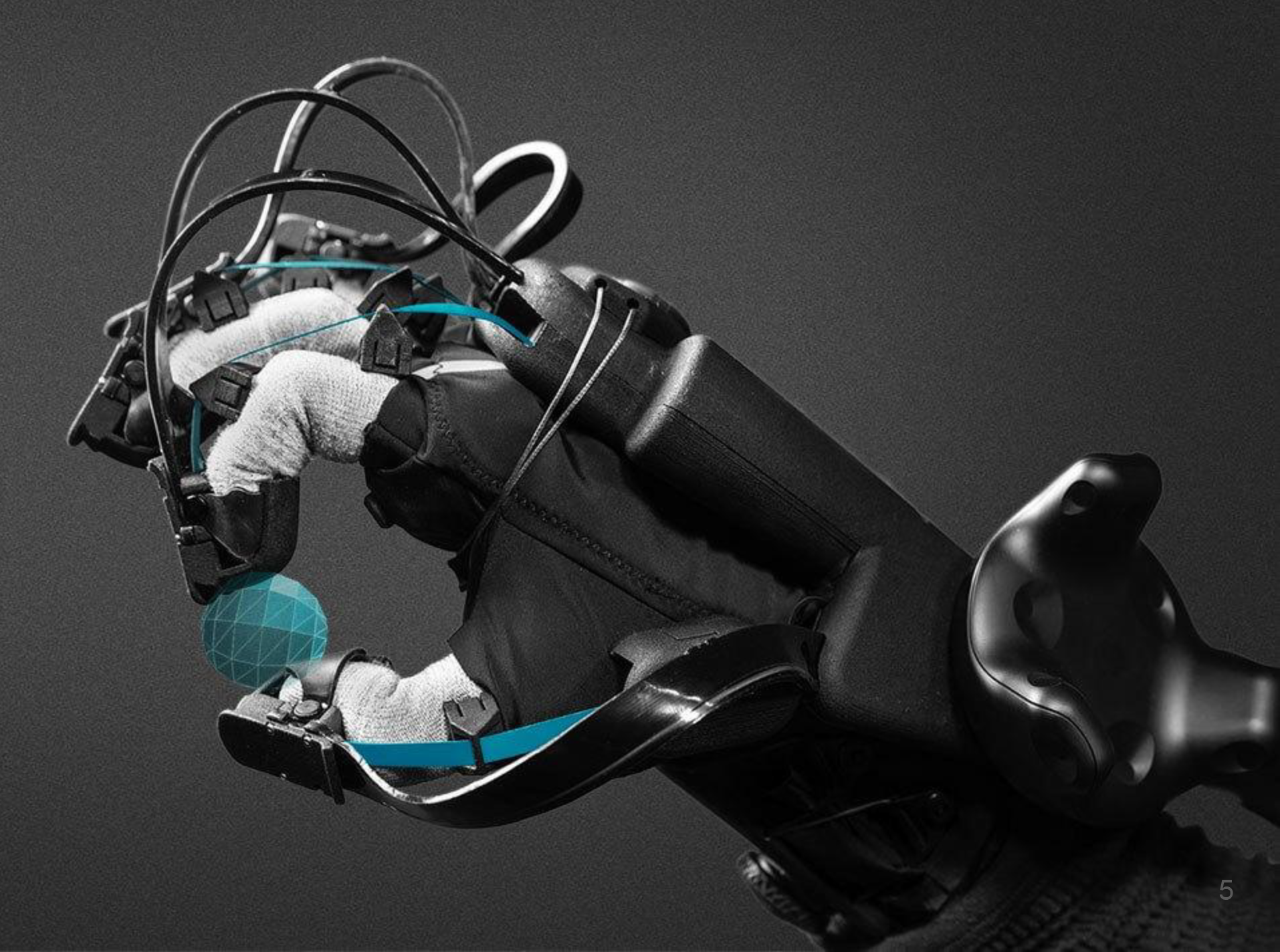
![]() Trend and Competitor Research
Trend and Competitor Research
My interests in tangible and wearable interaction design and my teammates’ in in remote AR/VR experiences and interactive athletic training and rehabilitation equipment set us on our path for trend research. We looked into a few companies in these spaces, such as NextVR, BHaptics, Teslasuit, Novasentis and Myant, with the latter inspiring us the most in terms of potential design opportunities.

![]() Concept Formation and Identification of Opportunities
Concept Formation and Identification of Opportunities
The key to the formation of our concept was my bringing forward the idea of combining textile computing with AR or VR technology to create a product that provides an invisible tactile dimension. This may have been too broad a scope overall, but it inspired our eventual direction; soon after, Grant suggested the potential for improving rehab and any kind of physical training by artificially providing tactile feedback with Myant’s technology. From this, we were able to consolidate opportunities and build a business model.

![]() Defining Business Model Canvas and Value Proposition
Defining Business Model Canvas and Value Proposition
Our value proposition was then defined by the term “augmented-physical learning”, suggesting the potential value to be gained by designing a system to deliver physical stimuli remotely and virtually. The major gains we identified were the ability to regain muscle memory (supported by our research) and improve recovery time and effectiveness, the immersiveness of the experiences we could create, and help people spend less time with their lives interrupted by injury recovery.

![]() Project Proposal: Pitching Costs, Needs, Deliverables
Project Proposal: Pitching Costs, Needs, Deliverables
To pitch to Myant, our project proposal focused more explicitly on the users of our proposed product: we built on our persona (based on a real professional race car driver who was injured and went through extensive rehab) and provided a look at an intended user journey that would provide value to someone in similar circumstances. Beyond this, we developed a clear breakdown of costs, competition in the market that we would face, an initiation strategy with specific phases identified, and a systemic view of how the product’s ecosystem would function, with all of the necessary partnerships with other companies and research institutions.
Group & Individual Project
Teammates
- Adam Albini
- David Ladouceur
- Charlene Li
- Grant Novak
- Shabad Singh
My Responsibilities:
- Concept development
- Trend analysis & synthesis
- Market research
- Defining value proposition
- Lead project proposal writer
- January-March 2020
- Trend analysis, competitive market analysis, design research, business model canvas
- Design Research, Haptic / Tangible, Service Design
